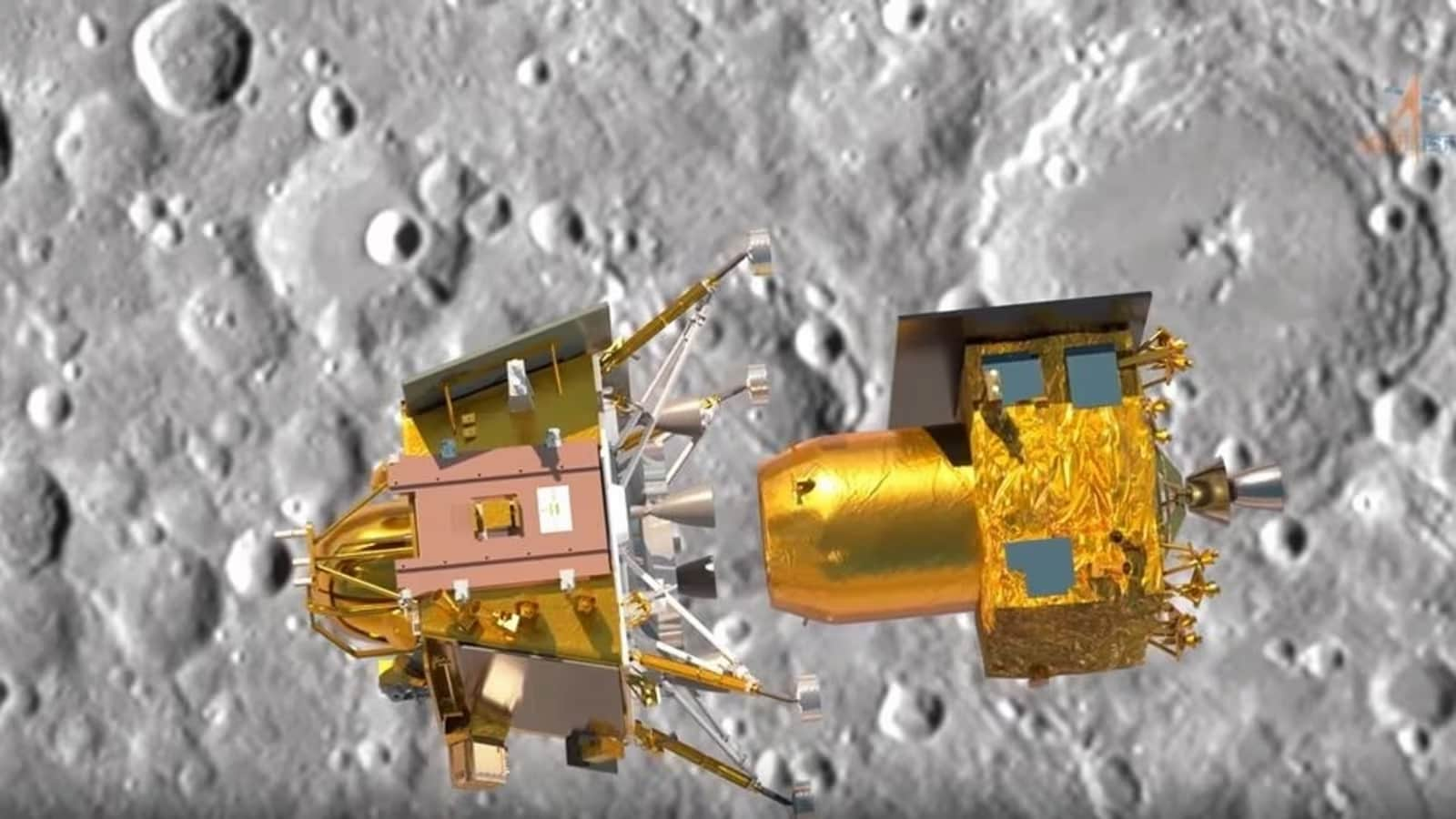Chandrayaan-3 Landing: What is a soft landing, why is India sending Chandrayaan-3 to the moon, and what occurs after it lands successfully? We elaborate.
India’s Chandrayaan-3 Moon mission successfully landed on the lunar surface at 6:04 p.m. earlier today, making history.
With the Lander’s’soft landing’ at the Moon’s south pole, India becomes the first nation to achieve this feat. A rover, a small vehicle designed to travel around on the Moon’s surface, will now emerge from the Lander.
On the 14th of July, when Chandrayaan-3 set off for the Moon, we briefed the public on the fundamentals of the mission, including how a mission launches into space, what Chandrayaan-1 and Chandrayaan-2 were, etc.
Here, we examine why a’soft landing’ is crucial to the mission, what makes landing at the south pole a difficult endeavor, and what will happen after India accomplishes this.
ISRO’s Milestone: Successful Parachute Deployment Tests for Gaganyaan Mission
Why is Chandrayaan-3 landing at the south pole, and what is a gentle landing?
Chandrayaan-3 Landing: ISRO states that the mission’s three goals are to demonstrate a safe and soft impact on the lunar surface, to demonstrate a Rover roving on the Moon, and to conduct on-site scientific experiments.
A soft landing is merely the landing of a spacecraft at a slow, controlled speed to prevent damage. Amitabha Ghosh, a scientist for NASA’s Rover mission to Mars, described it as follows in The Indian Express: “Imagine a spacecraft hurtling through space at 10 times the speed of an airplane, needing to nearly stop in order to land gently on Earth — all in a matter of minutes and, more importantly, without human intervention. In summary, this is a gentle landing.”
This showcases the technical capabilities of the spacecraft. At 70 degrees latitude, the impact site is near the south pole of the moon.
All previous Moon-landing spacecraft have landed in the vicinity of the Moon’s equator, primarily because it is simpler and safer there. The terrain and temperature are more conducive to the operation of instruments for extended periods of time. Sunlight is also present, providing a consistent source of energy for solar-powered devices.
However, the polar regions of the Moon are distinct. Temperatures can fall below 230 degrees Celsius in a number of regions, which are completely devoid of sunlight. This makes the operation of instruments problematic. In addition, there are numerous massive craters present.
Consequently, the Moon’s polar regions have remained unexplored. Extremely low temperatures could cause anything confined in the region to remain frozen in time, without experiencing significant change. Therefore, the minerals and soil at the north and south poles of the Moon could provide insight into the early Solar System.
Notably, Chandrayaan-2 intended to descend in this region in 2019, but it was unable to perform a soft landing and lost contact with Earth after impacting the surface.
What prevented Chandrayaan-2 from landing properly, and what has changed since then?
Chandrayaan-3 Landing: Subsequent analyses revealed that the 2019 Chandrayaan-2 had both software and hardware issues. S. Somanath, chairman of Isro, recently stated that the adjustments to the current mission were “failure-based.” He stated, “Instead of a success-based design for Chandrayaan-2, we are using a failure-based design for Chandrayaan-3, focusing on what can go wrong and how to handle it.” The following modifications have been made:
*Chandrayaan-2 lost control of its descent approximately 7.2 kilometers from the lunar surface. Its communications system relayed information about the loss of control as high as 400 meters above the ground. When it fell, the Lander had slowed to about 580 kilometers per hour.
A Lander does not have wheels; it has stilts, or legs, which are designed to touch down on the lunar surface. The legs of Chandrayaan-3 have been reinforced to ensure that it can descend and stabilize at a speed of 3 meters per second, or 10.8 kilometers per hour.
*The prospective landing site’s range has been expanded. Instead of attempting to land on a specific 500m x 500m patch as Chandrayaan-2 did, the current mission has been instructed to land securely anywhere within a 4km x 2.4km area.
The Chandrayaan-3 Lander has more propellant than the Chandrayaan-2 Lander. This has been done to ensure that the Lander can alter its landing site at the last minute if necessary.
*The Chandrayaan-3 satellite Lander has solar modules on four sides, while Chandrayaan-2 only has two. This is to ensure that the Lander will continue to draw solar power even if it crashes or lands in the incorrect direction. At least one or two of its surfaces would always face the Sun and be active.
What must occur for Chandrayaan-3 to effectively land?
The crucial technical maneuver that the Chandrayaan-3 Lander will have to execute on August 23 when it enters the final 15 minutes of its attempt to land softly on the Moon will be to convert its high-speed horizontal position to a vertical one, in order to facilitate a gentle descent onto the surface.
K Sivan, then-chairman of ISRO, described the Chandrayaan-2 soft landing mission failure as “15 minutes of terror” It consists of four phases:
1. During the Rough Braking phase, the horizontal velocity of the lander would be reduced from a range of 1.68 km/sec (over 6,000 km/h) at a distance of 30 km from the lunar surface to almost zero for a soft impact at the designated site. This must be accomplished with precision and within specified timeframes.
2. At a height of 7.42 kilometers from the surface, the lander will enter a 10-second “attitude hold phase” during which it will rotate from a horizontal to a vertical position while traveling 3.48 kilometers.
3. The “fine braking phase” will last approximately 175 seconds, during which time the lander will attain a vertical position. It will travel the final 28,52 kilometers to the landing site at a speed of 0 meters per second and an altitude of 800 to 1,000 meters. The Chandrayaan-2 spacecraft lost control and plummeted between the “attitude hold phase” and “fine braking phase.”
4. “Terminal descent” refers to the concluding phase, in which the spacecraft is intended to descend vertically to the surface.
What occurs once Chandrayaan-3 effectively lands on the Moon?
Spacecraft frequently carry instruments and experiments (referred to as payloads) that observe and document events in space. This data is then transmitted to Earth for scientists to examine and analyze.
The Vikram lander and Pragyan rover carry the same six payloads as the previous mission. There will be four scientific payloads on the spacecraft to study lunar quakes, thermal properties of the lunar surface, plasma changes near the surface, and a passive experiment to help accurately measure the distance between the Earth and the Moon. The fourth payload is provided by NASA.
The Rover carries two payloads designed to investigate the chemical and mineral composition of the lunar surface and to ascertain the composition of elements such as magnesium, aluminum, and iron in lunar soil and rocks.




